Lenovo ThinkPad X1 Carbon vs. Dell XPS 13: Which flagship wins?
It's a battle of titans in this face-off between the XPS 13 and ThinkPad X1 Carbon
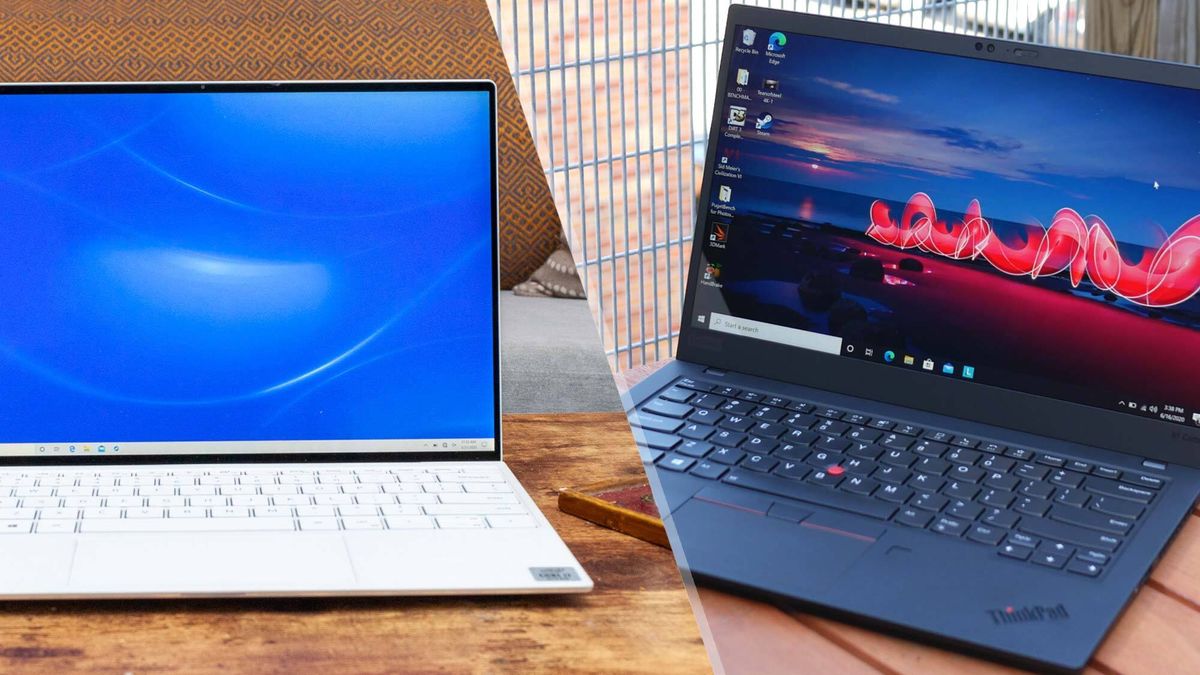
The Mayweather vs Pacquiao fight for the laptop world is set, and I promise this won't be a letdown. We recently published our reviews for the ThinkPad X1 Carbon (8th Gen) and XPS 13 (2020), two of the best laptops on the market. The two notebooks trade blow for blow in most areas with both having sleek designs, fast performance, great display options and long battery life. But there are some important differences between the ThinkPad X1 Carbon and the XPS 13 that should factor into your buying decision.
The ThinkPad X1 Carbon is first and foremost a business laptop. As such, it has some extra features you won't find on the XPS 13. On the other hand, without those features the XPS 13 can focus on portability. It also has some advantages over the ThinkPad X1 Carbon comes to battery life and performance thanks to the specific chips it uses.
- Best business laptops
- Which ThinkPad is right for you?
- XPS 13 vs XPS 15 vs XPS 17: Which Dell XPS is right for you?
You can't go wrong with either laptop but if you need to choose between these two title champions, then read to find out which one to get.
Lenovo ThinkPad X1 Carbon vs. Dell XPS 13: Specs
| Row 0 - Cell 0 | Lenovo ThinkPad X1 Carbon | Dell XPS 13 |
| Price | $1,745 | $1,749 |
| Display | 14-inch, 1080p | 13.4-inch, 1080p |
| CPU | Intel Core i5-10310U | Intel Core i7-1065G7 |
| GPU | Intel UHD | Intel Iris Plus |
| RAM | 8GB | 16GB |
| Storage | 256GB NVMe SSD | 512GB m.2 NVMe SSD |
| Ports | Two Thunderbolt 3, two USB 3.1 Type-A, HDMI 1.4, network extension, lock slot, headphone | Two Thunderbolt 3, microSD, headphone |
| Battery | 10:45 | 12:39 |
| Dimensions | 12.7 x 8.5 x 0.6 inches | 11.6 x 7.8 x 0.6 inches |
| Weight | 2.4 pounds | 2.8 pounds |
Value and configurations
The ThinkPad X1 Carbon is an expensive laptop, even when it's not configured with the pricey vPro CPUs. The base model starts at $1,553 and comes with a 1080p display, an Intel Core i5-10210U CPU, 8GB of RAM and a 256GB SSD.
Our cheaper review unit has a 1080p display, an Intel Core i5-10310U (vPro) CPU, 8GB of RAM, a 256GB SSD and a few optional upgrades (IR camera, Windows 10 Pro), costs $1,745.
The 4K model with a Core i7-10610U (vPro) CPU, 16GB of RAM and a 512GB SSD goes for $2,322. It's one of the most expensive options, only cheaper than the 1TB config, which costs an extra $268.
The $1,149 base model Dell XPS 13 has an Intel Core i5-1035G1 processor with 8GB of RAM, a 256GB M.2 PCIe NVMe SSD, an Intel UHD Graphics GPU and a 1920 x 1200 non-touch display.
Stay in the know with Laptop Mag
Get our in-depth reviews, helpful tips, great deals, and the biggest news stories delivered to your inbox.
We reviewed the $1,749 model, which features an Intel Core i7-1065G7 CPU, 16GB of RAM, a 512GB M.2 NVMe SSD, Intel Iris Plus graphics and a 1920 x 1200 touch display.
The laptop can also be configured with a 1TB SSD ($150), 2TB SSD ($350) and a 3840 x 2400 touch display ($300). A tricked-out XPS 13 costs $2,309 and gets you the Core i7 processor, a 2TB SSD, Windows 10 Pro and a UHD display.
Winner: XPS 13
Design
Choosing a winner in this round is futile. Not only because aesthetics are subjective but because the XPS 13 and ThinkPad X1 Carbon are modern notebooks with common design elements. And they're both portable, but for different reasons.
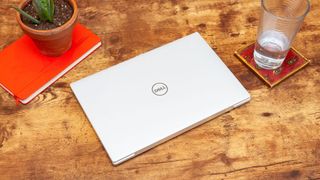
The XPS 13, with its now completely bezel-free design, is incredibly compact with a footprint of 11.6 x 7.8 x 0.6 inches. The X1 Carbon also has relatively slim bezels but only on three sides. As such, it measures 12.7 x 8.5 x 0.6 inches. What makes the X1 Carbon arguably more comfortable to carry around is its lightweight materials. Weighing in at 2.4 pounds, the 14-inch X1 Carbon weighs less than the 13-inch XPS 13 (2.8 pounds).
These are two attractive laptops whose signature designs contrast in many ways. The ThinkPad X1 Carbon has an understated design with stealthy matte-black finishes and an optional carbon fiber weave pattern on the lid. Red accents on the pointing stick and left-and-right click buttons add a touch of color to the ink surfaces.
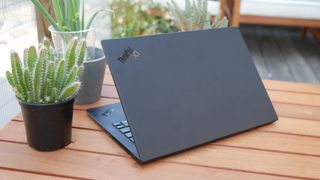
The XPS 13 is the most glamorous of the two notebooks, particularly the white version, which flaunts a Frost White lid and carbon-fiber weaved Alpine White deck. The aluminum lid gives the XPS a certain premium look and feel while the polished edges provide some visual bling.
While both of these laptops have excellent build quality, the ThinkPad X1 Carbon gets points for being tested to 12 military-grade durability tests, meaning it can survive harsh environments. The XPS 13 and ThinkPad X1 Carbon both have a fingerprint sensor and an IR camera for Windows Hello login.
Winner: Draw
Ports
We're going from nail-biter to blowout; the X1 Carbon has a better port selection of these laptops, and it's not even close.

While the XPS 13 has only two Thunderbolt 3 ports, a microSD card slot and a headphone jack, the X1 Carbon offers a buffet of inputs.
On the right side of the ThinkPad X1 Carbon are a USB 3.1 Type-A port and a lock slot. On the left side, you'll find two Thunderbolt 3 inputs, an Ethernet extension port, an HDMI 1.4, a headphone jack and a second USB 3.1 port.
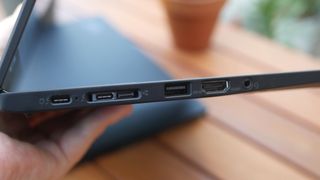
This would have been a clean sweep if Lenovo hadn't removed the SD Card slot from the X1 Carbon last year. Now photographers and videographers need to use a USB-to-SD card dongle to upload images.
Winner: ThinkPad X1 Carbon
Display
You can't go wrong choosing among the various display options on the XPS 13 or ThinkPad X1 Carbon. We reviewed the 1080p XPS 13 and both 1080p and 4K versions of the ThinkPad X1 Carbon. Across these screens, we saw sharp details, vivid colors and impressive brightness.
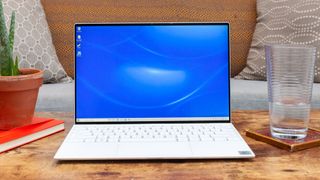
We didn't test the 4K screen on the XPS 13, so I can't comment on how it compares with the others. Of those we did test, the 4K screen on the ThinkPad X1 Carbon delivered the best viewing experience. Next was the XPS 13 with a 1080p screen, which was brighter and a bit more colorful than the 1080p matte display on the lower-end X1 Carbon.

According to our colorimeter, the 4K and 1080p displays available for the ThinkPad X1 Carbon cover 135% and 101% of the sRGB color gamut. The 1080p panel on our XPS 13 falls in the middle of those results, with 115% coverage.
We saw similar results in our brightness test. The 1080p X1 Carbon hit 364 nits of brightness whereas the XPS 13 reached 417 nits. The 4K panel on the X1 Carbon outshone both laptops, at 498 nits. Since we can't compare 4K-to-4K we're going to give Dell the win in this round for having the better 1080p option.
Winner: XPS 13
Keyboard and touchpad
The XPS 13 has a decent keyboard, but it doesn't compare with the class-leading one on the ThinkPad X1 Carbon.
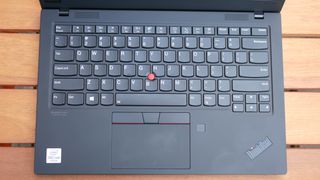
The Carbon's backlit keys offer deeper travel than those on the XPS 13 and they deliver a really satisfying tactile click. There is a meatiness to them that is missing on the XPS 13's keys. On a positive note for Dell fans, the XPS 13 has 9% larger keycaps that are well-spaced and comfortable to type on.

At 4.4 x 2.6 inches, the touchpad on the XPS 13 is actually a tad larger than the one on the ThinkPad X1 Carbon (3.9 x 2.2 inches). Both glass surfaces are responsive and didn't have any problems executing Windows 10 gestures.
A bonus for some people is the TrackPoint pointing stick centered on the ThinkPad X1 Carbon. An alternative to the touchpad, the little rubber nub lets you control your cursor without taking your hands on the keyboard.
Winner: ThinkPad X1 Carbon
Performance
If we're considering pricing, the XPS 13 with an Intel Core i7-1065G7 CPU and 16GB of RAM is a direct competitor to the X1 Carbon with an Intel Core i5-10310U vPro with 8GB of RAM, not the even pricier Core i7 vPro, 16GB of RAM model we also tested. I'll include scores from all three laptops, but keep that in mind as you go through this section.
On the Geekbench 5 overall performance test, the XPS 13 scored a 4,648 whereas the X1 Carbon with a Core i5-10310U notched only a 3,597 and the Core i7-10610U landed at 3,935. The category average is 4,026.
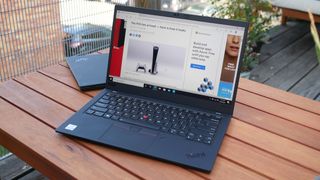
Those scores translated directly in our Handbrake video-editing test, in which the XPS 13 (Core i7) needed only 15 minutes and 10 seconds to convert a 4K video to 1080p. It smoked both Core i5 ThinkPad X1 Carbon (19:51) and the Core i7 (18:29), which nearly matched the premium laptop average (18:25).
The X1 Carbon gained some ground on our hard drive test. The 256GB PCIe SSD in our cheaper model duplicated 5GB of multimedia files in 6 seconds for a transfer rate of 783 megabytes per second, and the 512GB SSD config did it in 5 seconds for a rate of 997.9 MBps. It took the XPS 13 8.3 seconds to complete the task, which comes out to a rate of 613.1 MBps.
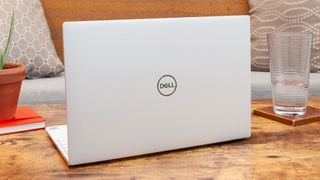
But the pendulum swings back in Dell's favor when you look at graphics performance. The X1 Carbon has Comet Lake chips so it relies on integrated Intel UHD graphics, which are weaker than the Iris Plus graphics in the XPS 13's Ice Lake CPUs.
This became apparent when we tried playing Dirt 3 on these ultraslim laptops. We had no problems drifting around tight turns at 59 fps on the XPS 13. In comparison, the Core i5 and Core i7 ThinkPad X1 Carbon ran the racing game at only 30 fps and 33 fps, respectively.
Winner: XPS 13
Battery life
The XPS 13 lasts longer on a charge than the ThinkPad X1 Carbon and the difference is pretty significant. The Dell lasted for 12 hours and 39 minutes on our battery test, which involves continuous web surfing over Wi-Fi at 150 nits.
With a respectable runtime of 10 hours and 45 minutes, the 1080p X1 Carbon will power down a few hours before the XPS 13. The 4K version lasts for 7 hours and 23 minutes, which is OK given the UHD panel.
Winner: Dell XPS 13
Overall winner: Dell XPS 13
Dell wins this championship matchup in a photo finish. In the end, the difference came down to pricing; as a business notebook, the X1 Carbon demands a hefty premium and costs a few hundred dollars more than the XPS 13 across the board. If money isn't an issue, then deciding between these two gets tricky.
| Header Cell - Column 0 | ThinkPad X1 Carbon | XPS 13 |
|---|---|---|
| Value (10) | 6 | 8 |
| Design (10) | 9 | 9 |
| Ports (10) | 8 | 5 |
| Display (15) | 13 | 14 |
| Keyboard/Touchpad (15) | 14 | 12 |
| Performance (20) | 17 | 19 |
| Battery Life (20) | 17 | 19 |
| Total | 84 | 86 |
The XPS 13 has better performance and longer battery life, but buying the Dell means you'll forgo the world-class ThinkPad keyboard and generous port selection on the ThinkPad X1 Carbon. I want to reiterate: you can't go wrong with either notebook. They both have striking, ultraportable design and excellent display options, among a wide range of features they both deliver.
If I had to choose between them, I'd buy the ThinkPad X1 Carbon, despite what the above numbers say. I could use the extra screen real estate and the laptop feels considerably lighter than the XPS 13, even though the weight difference between these isn't massive. I also value USB Type-A ports more than most people. Having said that, the XPS 13 might be a better choice if you need a compact machine with extended endurance, or if the lofty price of the ThinkPad turns you off.
Phillip Tracy is the assistant managing editor at Laptop Mag where he reviews laptops, phones and other gadgets while covering the latest industry news. After graduating with a journalism degree from the University of Texas at Austin, Phillip became a tech reporter at the Daily Dot. There, he wrote reviews for a range of gadgets and covered everything from social media trends to cybersecurity. Prior to that, he wrote for RCR Wireless News covering 5G and IoT. When he's not tinkering with devices, you can find Phillip playing video games, reading, traveling or watching soccer.
